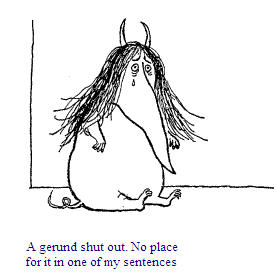Not so much a blog post, as a thinking process.
When I pointed out in my lit review that a key thing about asynchronous dialogue was, um, it was asynchronous, I didn’t realise I’d then get tied up in a whole new debate about time scales, and learning trajectories and how you study the temporal aspect of classroom talk. This is scarily wide ranging. The article I’ve just read goes from the nano second (chemical synthesis, on a scale of 10 seconds to the power of minus five) to the 32-billion-year time scale (universal change, on a scale of 10 seconds to the power of 18). The semester, should you be interested, is fairly central in this scale (10 seconds to the power of seven, or four months in regular speak), Actually, the course I’m studying ran from November to February, which puts it about midway between chemical synthesis and universal change. Hmmm, I think I need to narrow my focus 🙂
The Martini affordances of asynchronous dialogue – any time, any place, anywhere – tie in with a temporal analysis, because people tend to claim that you can do it any time. But, of course, you can’t. In fact, my groups are all weaving together extremely different timetables. They’re in different timezones, they’re at work from six till midnight, they’re out pumping iron, they’re leafing through the articles in their lunch hour, they’re online while the baby is asleep, or in the few minutes before the library closes, or before they collapse for the evening with a glass of wine. This in comparison with the F2F residential school, where everyone has dropped everything to spend a week on a group project. So, in the background, is always the regular routine – the things which people just can’t get out of doing, especially when they can go online anytime.
Then there’s the several-year timescale. They’ve done one or more other OU courses, they’re probably signed up for a few in the future, they’re training for a career, they’re looking forward to further qualifications. This course is a small segment of the time in which they become psychologists.
There’s the course timescale, or the section of it I’m focusing on, the first few days when they meet for the first time and put together their project proposal.
And there are the individual postings – the pieces which are put together to make up the project proposal.
And there is the Project Proposal Form, the improvable object which they move through those few days, changing it a little or a lot, focusing on finishing it and getting it to the right place at the right time. I think if I justfocus on that as the improvable object, I miss something about the group as an improvable object. They start with a number of individuals, who have been put together on a list, and they end the few days as a group working together. I think perhaps I’m interested in both of those. And, indeed, if I look at the things that students and tutors set as goals, some of them are things like, critique the last version, or add final details to the PPF, but some are things like get to know each other’s strengths or just, enjoy the weekend.
And, of course, the postings also carry forward through time, and they are also developed and improved as people copy them and quote them. Hmm. This might be where part of my typographical analysis comes in. So I might focus on improvable objects, and I might set the timescales section as background description rather than as analysis? And I have to keep making sure I’m linking back to asynchronous dialogue (AD). How does AD help with this, and how do these improvable objects support the learning with AD? Would they be possible or similar with F2F or synchronous dialogue?
 If you look at the list of sociocultural terms I listed a couple of posts back, you’ll observe that they’re not words which you’d expect to hear in day-to-day conversation. They also prove to be difficult words to use in a thesis, and I’ve been struggling to use any of them in my current chapter.
If you look at the list of sociocultural terms I listed a couple of posts back, you’ll observe that they’re not words which you’d expect to hear in day-to-day conversation. They also prove to be difficult words to use in a thesis, and I’ve been struggling to use any of them in my current chapter. I’m reading the Cambridge Companion to Vygotsky and trying to make sense of my notes on Boris Meshcheryakov’s chapter on Terminology in Vygotsky’s writings. Here’s my version of his explanatory chart (which I can’t persuade WordPress to render legibly) – and a worked example involving squirrels.
I’m reading the Cambridge Companion to Vygotsky and trying to make sense of my notes on Boris Meshcheryakov’s chapter on Terminology in Vygotsky’s writings. Here’s my version of his explanatory chart (which I can’t persuade WordPress to render legibly) – and a worked example involving squirrels.